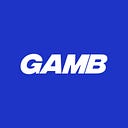Dear Gamb Community,
I am taking the time to give you a detailed progress report on the development of our GAMB Marketplace software.
Background:
The objective as stated on our ICO site www.gamb.io is to build a blockchain based e-commerce marketplace. Our current ecosystem has over 25.000 merchants and processes over € 2.5 billion per year.
Our executive and senior staff members have over 15 years of experience in the e-commerce space and our solutions have scaled many projects to above the 100.000.000 € annual turnover on a single instance base. Based on our experience we decided to build the GAMB marketplace framework like this:
High Level:
The solution consists of different layers and modules. Each layer has a special purpose and resolves one key element of the marketplace.
On a module level we have these modules:
GAMB Marketplace Front Module:
This the part of the marketplace that the customer sees and that allows the user to:
- buy products
- review orders
- comment opinions
GAMB Merchant Portal Layer Module:
This is a special extranet access for the merchant. In this area, the merchant can manage his catalogue, orders and stocks. He can set prices and review commissions earned. Further, he can generate invoices and vote on merchant alliance topics.
GAMB Administration Layer Module:
This area is reserved for members of the GAMB team. Here we review and activate merchants, manage the product catalogue, review commissions and orders. Further, we also manage the entire front end design, translations, third party integrations and much more.
On a Layer level we have defined these layers:
The product layer allows the publication of a structured product catalogue. The Product Layer is the backbone of the marketplace.
The focus on the 0.1v is to establish a structured catalogue. The main functionality is to allow merchants to match their product catalogue against the GAMB product base.
Product Layer 0.1v features with development status:
- Create Product on admin level → completed
- Upload Images on admin level → completed
- Description based on templates → completed
- Multilingual catalogue (EN, DE, ES) → completed
- Product Matching via CSV → completed
- Product Matching via TXT → completed
- Product Matching via FTP → Pending (December 1)
- EAN Code automatch → completed
- MPN Code automatch → completed
- Basic enrichment features (Merchant) → completed
Product Layer 0.2v features with development status:
- enhanced product enrichment features → pending
- API module for product synchs → pending
- Product opinions → in development
- product feeder → pending
Status resume: We are well ahead of our timeline on the product layer. We currently have listed over 1 mio products already and matched randomly 500.000 prices from 50 fictitious merchants.
The Transaction Layer allows customers to select a product and purchase it. It is the layer that facilitates the transaction and sale of selected products.
The focus on the 0.1v is to build a solid order management. The main task is to split orders with multiple order lines from different merchant products on merchant level. The experience for the customer must be seamless with one simple shopping cart. The customer must have a simple buying experience, regardless from which merchants he actually purchases the products and receives the shipments from.
Transaction Layer 0.1v features with development status:
- List multiple merchants with different pricing on product level → completed
- Unify different products from different merchants in one shopping cart → completed
- Integrate a minimum of 3 payment gateways to process transactions → completed (currently integrated 16 gateways and 4 payment options)
- Order split post transaction and show split order on merchant extranet → completed
- Order status changes on merchant extranet → completed
Transaction Layer 0.2v features
- Return order management on customer extranet → pending
- Customer account with stored payment methods → pending
- Merchant opinions → in development
Status resume: This layer has the most complex rule base. The difficult task of making the unified shopping cart with different items from different merchants a seamless experience to the customer was solved with excellency.
The Finance Layer manages all commissions and charges against the merchant base. It is the backbone for revenue for the GAMB Marketplace.
The focus on the 0.1v is to allow commission settings on category level and manage generated commissions.
Finance Layer 0.1v features with development status:
- Create commission table structure on subcategory level → completed
- Allow merchant level override on commission structure → completed
- Calculate generated commissions and show pending commission charges on merchant extranet → completed
- Establish payment cycle for generated revenues against merchant accounts → completed and set at 14 days
Finance Layer 0.2v features
- Auto transfer of payments → pending
Status resume: The finance layer is perfectly setup and allows incredible flexibility and transparency on the merchant side.
The Blockchain Layer needs to cover not only payment transactions, but also voting, opinion tracking and other features we defined in our white paper.
Blockchain Layer 0.1v features with development status:
- Analyse and test different protocols → completed
- Implement preferred test protocol and transaction layer → completed
Status resume: We have implemented and tested transactions with NEM
Resume:
Our marketplace MVP v. 0.1 is almost complete and we are a couple of months ahead of schedule.
I will continue to provide regular status updates on the development progress of the MVP v0.1.
About Luis Krug:
Luis Krug is the CEO of Gamb.io. Luis has over 20 years of experience in the e-commerce sector having built several companies that have invoice of € 100 mio annual turnover. Connect with Luis via Linked-In.
About GAMB.io:
GAMB is the decentralized marketplace of the future with no decision making unit other than the owners of the marketplace themselves. The Merchant Alliance members (token holders) will define rules into smart contracts so that transparency, trust and sustainability are guaranteed.
